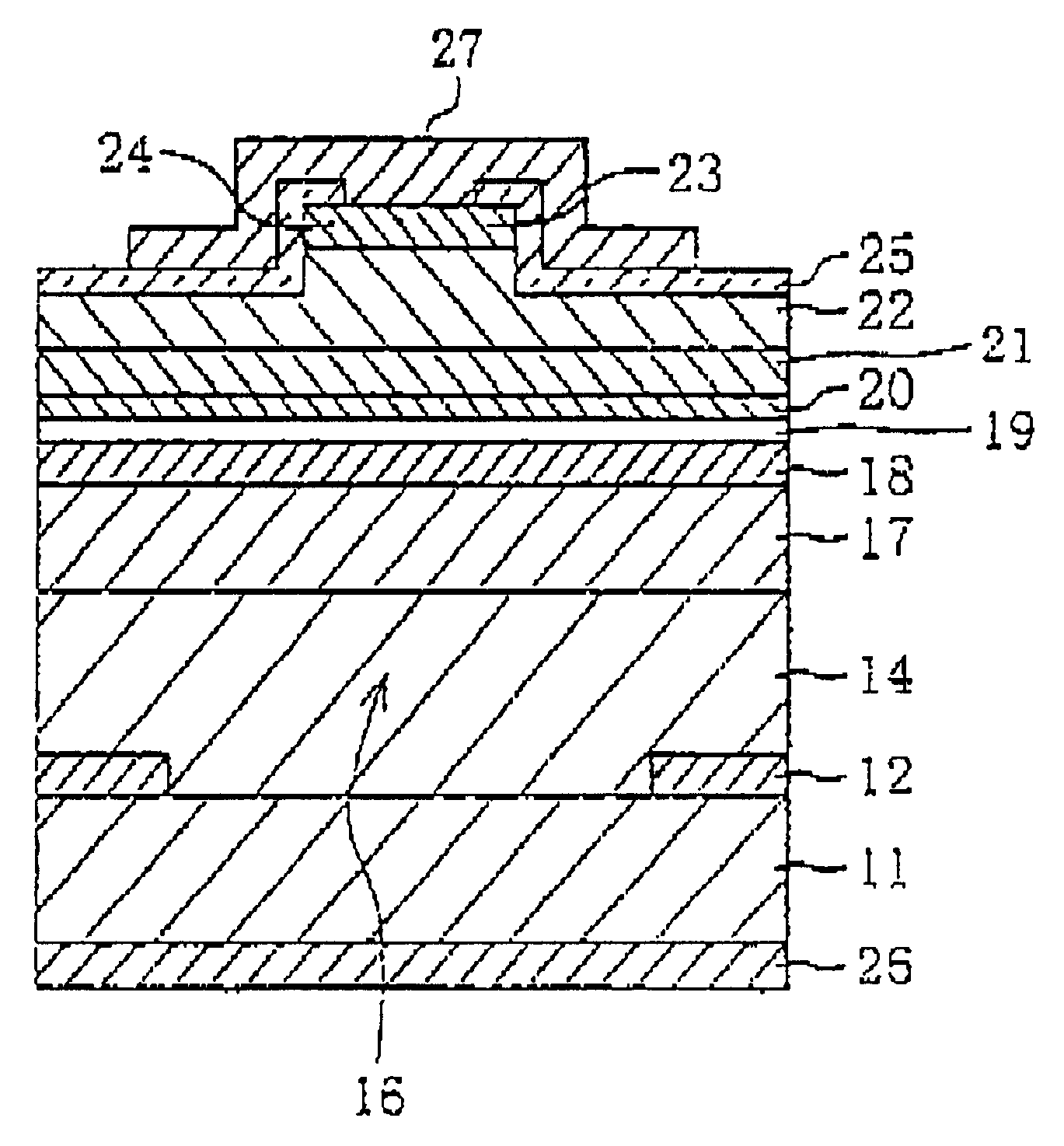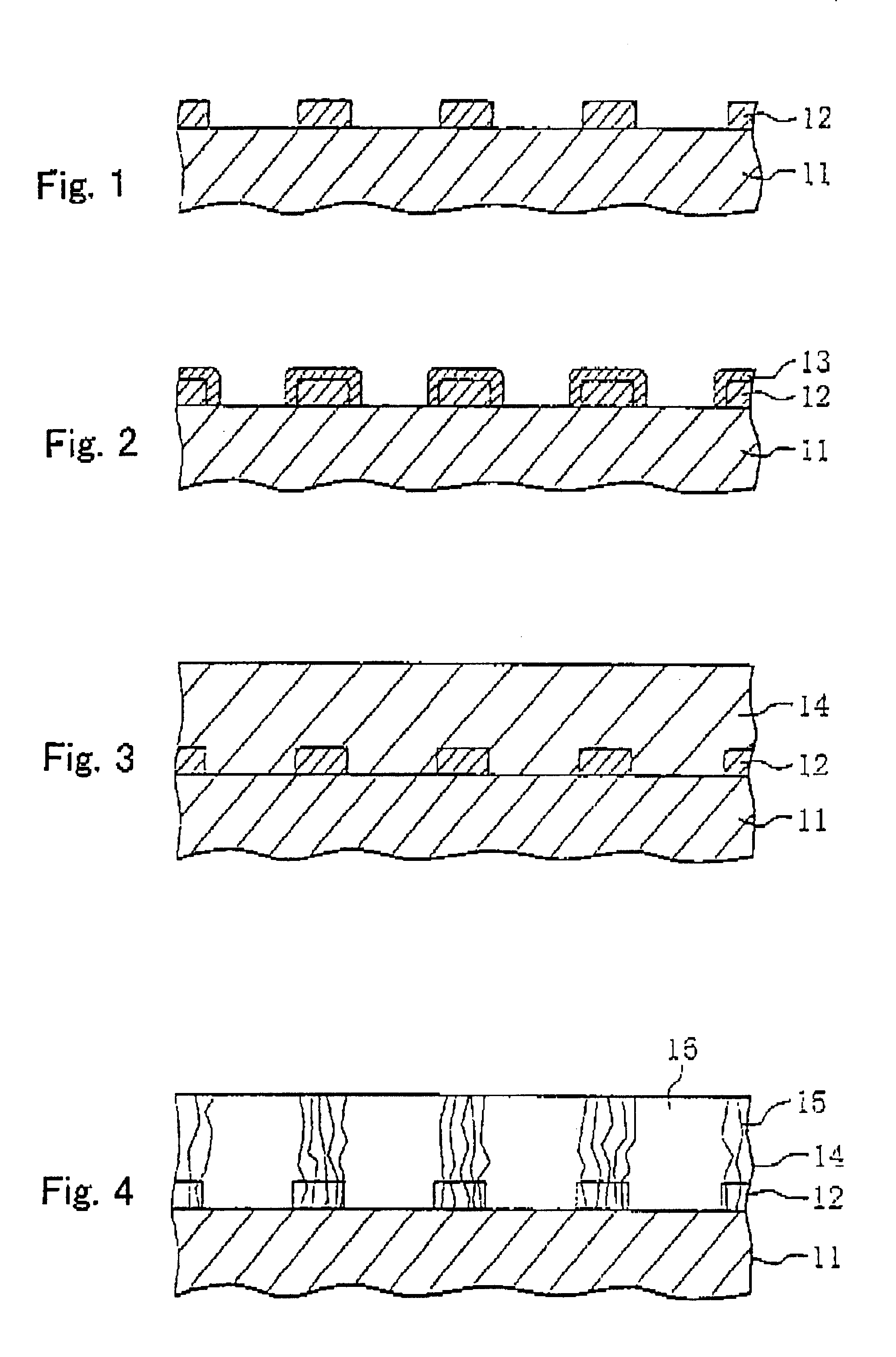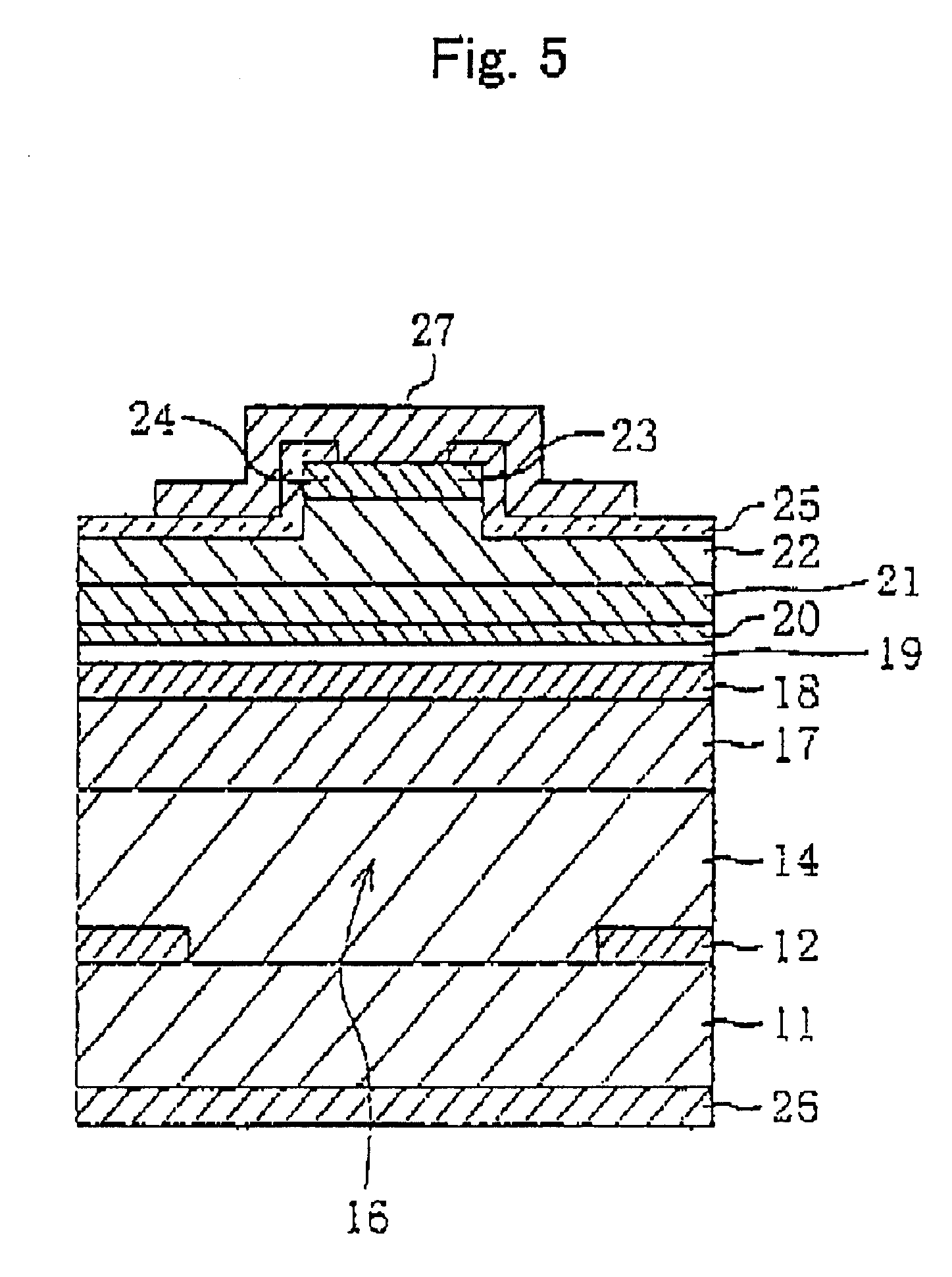Semiconductor laser, semiconductor device, and their manufacture methods
a semiconductor and laser technology, applied in semiconductor lasers, laser details, electrical equipment, etc., can solve the problems of high manufacturing cost, hard to generate cracks in the algan buffer layer, and difficult to generate cracks in the buffer region
- Summary
- Abstract
- Description
- Claims
- Application Information
AI Technical Summary
Problems solved by technology
Method used
Image
Examples
first embodiment
With reference to FIGS. 1 to 5, a method of manufacturing a semiconductor laser according to the invention will be described.
As shown in FIG. 1, a SiC substrate 11 having a (0001) Si plane as its principal surface is cut from a hexagonal 6H-SiC bulk grown by an improved Rayleigh method. The SiC substrate 11 is doped with n-type impurities at a carrier concentration of 2.times.10.sup.18 cm.sup.-3.
On the SiC substrate, an n-type Al.sub.0.1 Ga.sub.0.9 N layer is grown having an impurity concentration of 8.times.10.sup.18 cm.sup.-3 and a thickness of 100 nm. The thickness may be 50 to 300 nm and the impurity concentration may be 5.times.10.sup.17 to 1.times.10.sup.19 cm.sup.-3. This AlGaN layer is grown by MOVPE. For example, trimethylgallium (TMGa), trimethylaluminum (TMAI) and ammonia are used as source gas, SiH.sub.4 is used as source dopant and hydrogen is used as carrier gas. The growth conditions are a pressure of 100 Torr and a temperature of 1090.degree. C. The pressure may be 7...
second embodiment
Next, with reference to FIGS. 6 to 9, the method of manufacturing a semiconductor laser will be described.
An SiC substrate 11 shown in FIG. 6 is similar to the SiC substrate 11 of the first embodiment shown in FIG. 1 An SiO.sub.2 film is formed on the surface of the SiC substrate 11 to a thickness of 200 nm by thermal chemical vapor deposition (thermal CVD). The thickness of the SiO.sub.2 film may be set to 100 to 500 nm. This SiO.sub.2 film is selectively etched by using hydrofluoric acid to leave striped SiO.sub.2 masks 28.
The width of the SiO.sub.2 mask 28 is 4.0 .mu.m and a distance (pitch) between centers of adjacent SiO.sub.2 masks 28 is 8.0 .mu.m. The SiO.sub.2 mask width may be set to 1.0 to 10.0 .mu.m and the pitch may be set to 2.0 to 20.0 .mu.m.
As shown in FIG. 7, an n-type Al.sub.0.1 Ga.sub.0.9 N layer 12 having a thickness of 100 nm and an impurity concentration of 8.times.10.sup.18 cm.sup.-3 is selectively grown on the exposed surface of the SiC substrate 11. The thic...
third embodiment
Next with reference to FIGS. 10 and 11, the third embodiment will be described.
As shown in FIG. 10, on the surface of an n-type SiC substrate 11, an n-type AlGaN pattern 29 is formed. The SiC substrate 11 is similar to the SiC substrate of the first embodiment shown in FIG. 1. The n-type AlGaN pattern 29 is formed by a method similar to that used for forming the AlGaN pattern 12 of the first embodiment shown in FIG. 1. Although the AlGaN pattern 12 shown in FIG. 1 is parallel to the direction of the SiC substrate 11, the AlGaN pattern 29 of the second embodiment is parallel to the direction of the SiC substrate 11. The AlGaN pattern 29 has a thickness of 100 nm, a width of 4.0 .mu.m, a pitch of 8.0 .mu.m and an impurity concentration of 8.times.10.sup.18 cm.sup.-3. The pattern may be set so that it has the thickness of 50 to 300 nm, the width of 1.0 to 10.0 .mu.m, the pitch of 20 to 20.0 .mu.m and the impurity concentration of 5.times.10.sup.17 to 1.times.10.sup.19 cm.sup.-3.
By us...
PUM
 Login to View More
Login to View More Abstract
Description
Claims
Application Information
 Login to View More
Login to View More - R&D
- Intellectual Property
- Life Sciences
- Materials
- Tech Scout
- Unparalleled Data Quality
- Higher Quality Content
- 60% Fewer Hallucinations
Browse by: Latest US Patents, China's latest patents, Technical Efficacy Thesaurus, Application Domain, Technology Topic, Popular Technical Reports.
© 2025 PatSnap. All rights reserved.Legal|Privacy policy|Modern Slavery Act Transparency Statement|Sitemap|About US| Contact US: help@patsnap.com



